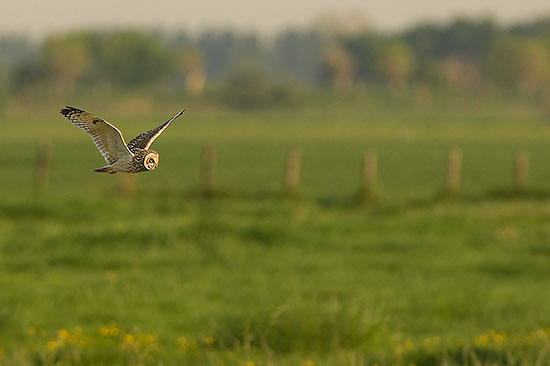In my opinion a good spring migration day belongs to one of the most exciting and overwhelming birding experiences in the Low Lands (Belgium and the Netherlands). Since I’m 18 years old, I spent almost every year a few days watching birds along our Atlantic coast during the spring migration.
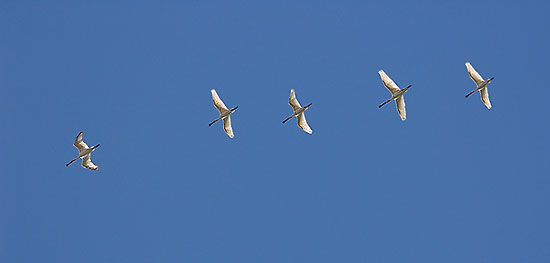
Under here an image of birdwatchers at Breskens.
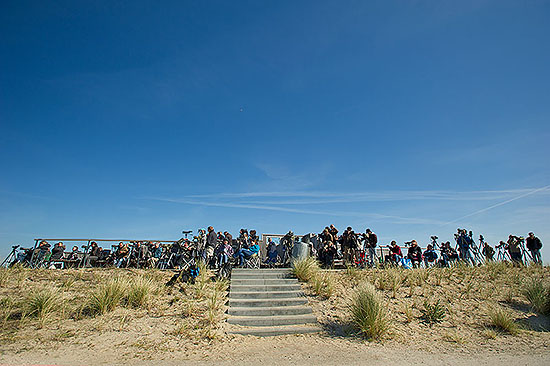
Half of the job is predicting a spectacular day. Coastal migration is at its best when there is a pretty strong Eastern or South eastern wind, by preference even 4 or 5 Beaufort, blowing the birds along the coast. A sunny day with packed clouds is ideal for thermals. But even on those seemingly perfect days, the numbers of migrating birds can be disappointingly low. The above described weather conditions are only a small part of the migration conditions. The weather during the previous days and weeks is even more important. The best conditions arise when there is a bottleneck created by bad weather conditions South of us. Classical bottlenecks often occur South of bad weather fronts in the mountain ranges, such as the Pyrenées, or at one of the migration corridors, such as Gibraltar. The longer the bad weather conditions last, the more birds are packing up south of the bad weather front, waiting for better weather conditions. When the weather clears up, thousands of birds will then start together on their journey to the North. If there is no strong wind from the East, the migrating birds will soon spread their voyage over a very broad front in Western Europe. But from 3 to 5 Beaufort, many of the birds will be driven along the coastal line and will follow it to the North. These perfect conditions only occur every few years. In some years there are not enough consecutive days of bad weather to hold up very large numbers of migrating birds, so smaller numbers will migrate more continuously. Thus following up the weather conditions all over Europe is crucial to predict a good migration day!
Under here an image from a Great White Egret, which was photographed at The Fonteintjes, along the Belgian coast on an excellent bird migration day, 25-04-2009.
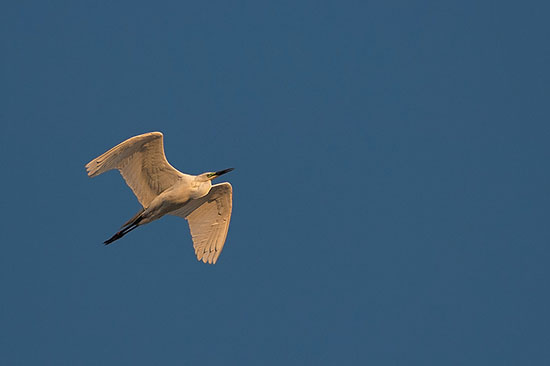
That same day no less than 20 Purple Herons flew over the site, under here one of the pictures I took that day.
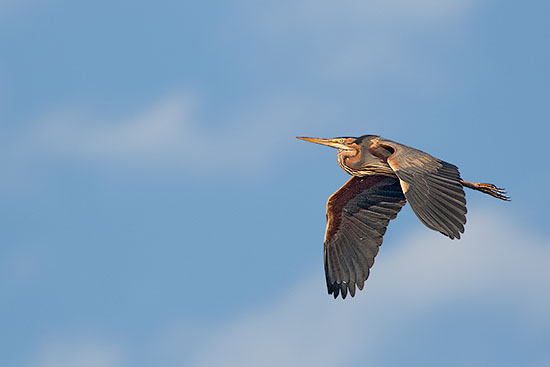
One of the best spots to observe large numbers of migrating birds is Breskens. Birds following the coastal line cross the river Schelde around this area. Birds that were driven more inland bump onto the river Schelde and will often follow it to the West till they will cross the Schelde in Breskens.
On 5, 6, 7 and 8 may 2016, thousands of passerines and huge numbers of raptors migrated along Breskens. Although the numbers of birds varied a lot on these days, all of them were spectacular. The fifth of May was my favourite day. Here’s the story of this day. The best time to arrive is around sunset, we were there around 6 a.m. When driving towards the coast I soon noticed spectacular numbers of small passerines and Common Swifts flying northwards. This looked very promising… As soon as we got out of the car, we were blown away by the spectacular choir of singing passerines. Nightingales, Garden Warbler, Robins, and a Western Grasshopper warbler, were all singing their lungs out to attract females or to keep other males out of their territories.
Under here images from a Nightingale, a Garden warbler and a Grasshopper Warbler.
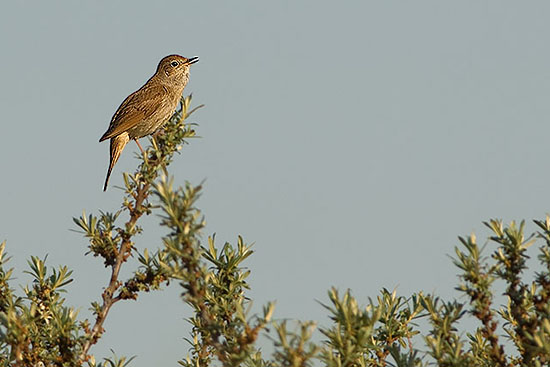
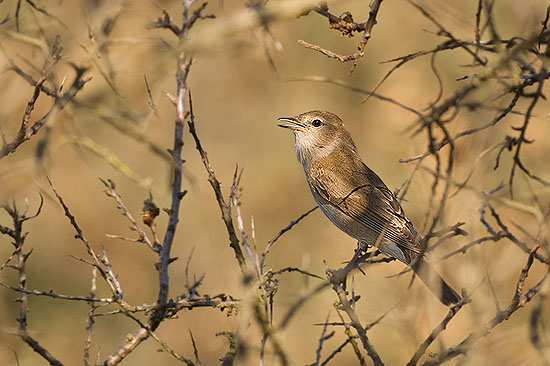
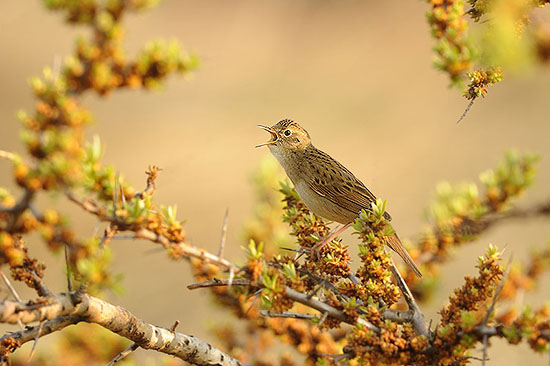
From the moment we arrived we were struck by the massive amounts of Common Swifts. An almost non-stop flow lasted during the entire day. On most of the migration days, I get a little bored around noon, as most of the birds are then so high one almost doesn’t notice them anymore. But on this day, the Common Swifts would keep on passing by till dark. It is very hard to describe the overwhelming feeling, but as far as would meet the eye over the land, small groups of Swifts could be seen all day long flying to the North. Towards the sea, over a small coastal area, the same scenario took place with almost constantly migrating birds! During the first hours of the day, the Common Swifts would often fly by below the dune we were standing on and sometimes they even flew in between the people! In the evening when temperatures went down, the swifts flew ridiculously low and close by again. No less than 24257 Common Swifts were counted that day!
Under here images from a Common Swift photographed at first light.

The next images show a larger group of Swifts and two birds flying between us and the sea.
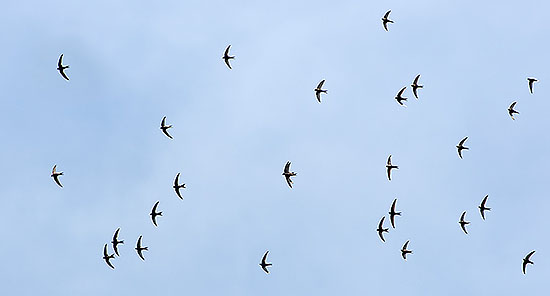

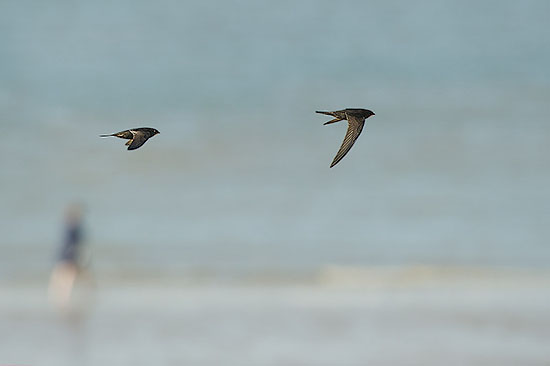
The first three to four hours of the day were overwhelming because of the high numbers and variation of all kinds of passerines and other smaller actively flying bird species. When it becomes warm enough for thermal around 10 to 11 a.m., the larger birds of prey start to show up. Passerines are often flying so high by then, that many of them are unnoticed. During the first hours high numbers of Barn Swallows and House Martins flew over. During the entire day 8773 Barn Swallows and 1938 House Martins were counted. A nice bonus were two Red-rumped Swallows, of which one flew by at very close range. Under here images from Barn Swallows, and a Common Cuckoo flying over the beach, a pretty unusual observation as well.
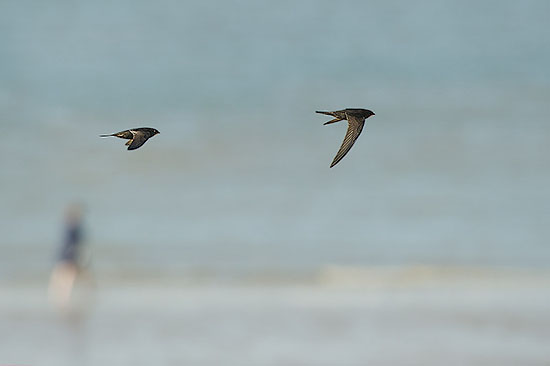
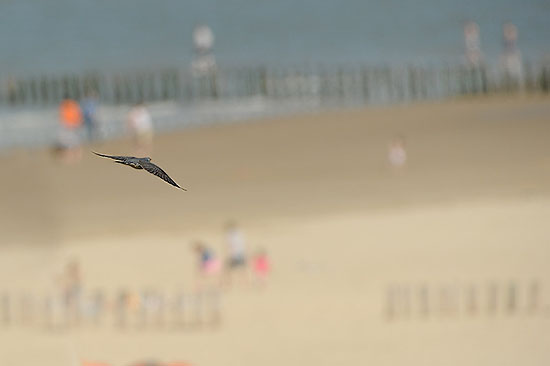
About 530 Yellow Wagtails were counted, 23 Grey-headed Wagtails (ssp thunbergi), and 5 Yellow-crowned wagtails (flavissima). During the first hours of the day we spotted some actively flying raptors, such as a Montagu’s Harrier, a few Merlins, an Osprey and several Sparrow Hawks.
Under here the image of a Merlin, which was photographed on 25 May 2009 at The Fonteintjes.
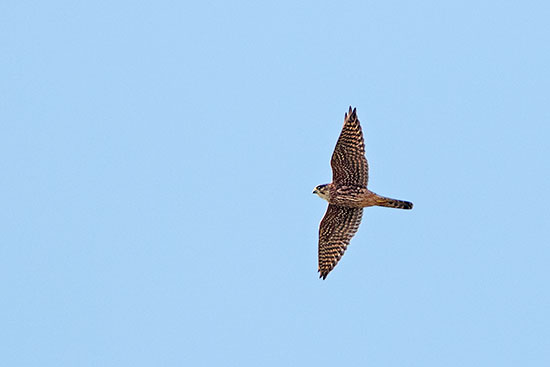
When the temperature heats up, most of the passerines start to fly much higher. They can be tougher to observe by then and are more easily overlooked. But from then on the birds of prey who use more often thermals start to fly over in higher numbers. A little more than 100 birds of prey were counted that day, of which 4 Ospreys and 5 Black Kites.
Under here an image from one of the 11 Common Buzzards which migrated over the observation site.
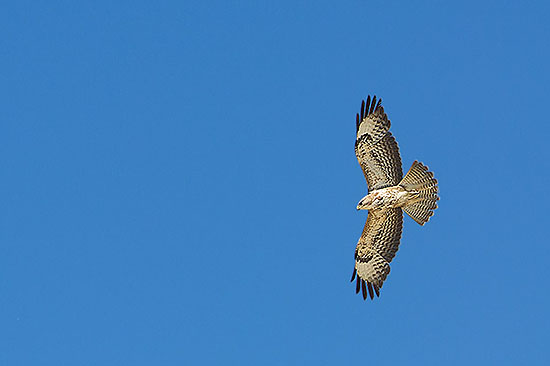
Under here, one of the 17 migrating Sparrowhawks counted that day.
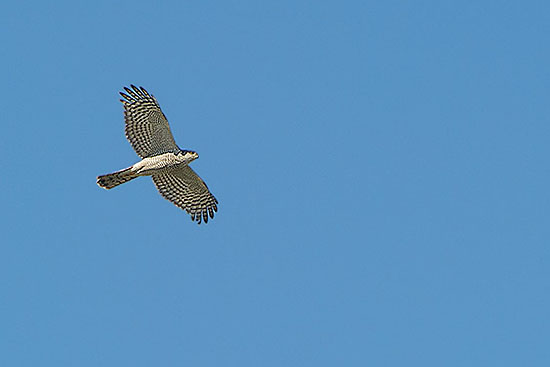
A total number of 39348 birds was counted on that day, spread over 105 species. Remarkable numbers or seldom observed species were 11 Temminck’s Stints, 2 Gull-billed Terns and 1 Caspian tern, 4 Dotterels and 6 European Serins. A damn good day, which I will remember mainly because of the vertiginous numbers of Common Swifts, who migrated in an almost constant flow during the whole day!
On the seventh of May, I was again present in Breskens. The numbers of Common Swifts had dropped down completely, but the numbers of migrating birds of prey were even more spectacular: 170 individuals spread over 17 species. The most spectacular were 11 Griffon Vultures showing up. Unfortunately I managed to dip them: because the numbers of raptors seemed to have dropped down around noon, I decided to have a lunch inside a restaurant. One should forbid these huge bastards to fly over while I am having my lunch! But that’s life, and I had a damn good lunch… 14 Black Kites was a day record for Breskens.
Under here an image of 3 Black Kites, which flew over that day. By noon most of the raptors are flying over at really high altitudes. Picking up as most as possible tiny spots in your bins or telescope and determine them correctly at a great distance is half of the fun…
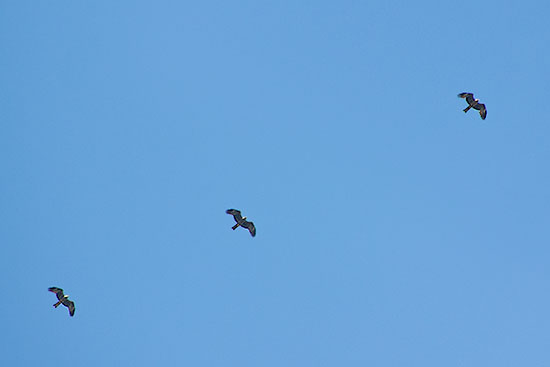
On the next image a Western Marsh Harrier, the most numerous raptor that day, with a number of 46 individuals.
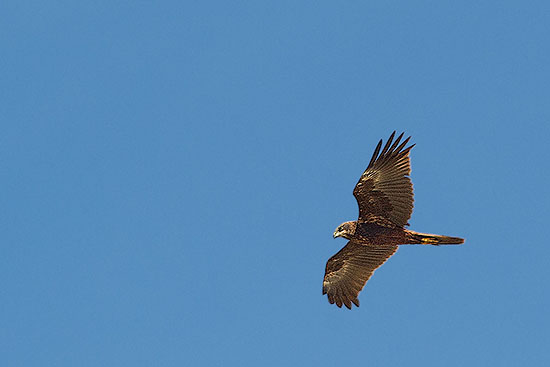
To complete the list of the migrating raptors: 6 Ospreys, 2 Honey-Buzzards, 9 Sparrow-Hawks, 5 Hen Harriers, 1 Pallid Harrier, 1 Montagu’s Harrier, 11 Common Buzzards, 40 Kestrels, 1 Red-footed Falcon, 6 Merlins, 4 Hobby’s and 2 Peregrine Falcons. The sighting of a Red-rumped Swallow was again a remarkable observation and 593 Grey-head Wagtails were seen migrating North. One very large group of more than 110 individuals flying low above the beach was very spectacular to witness!
Under here images from one of the 5 Purple Herons flying over on the 7the of May.
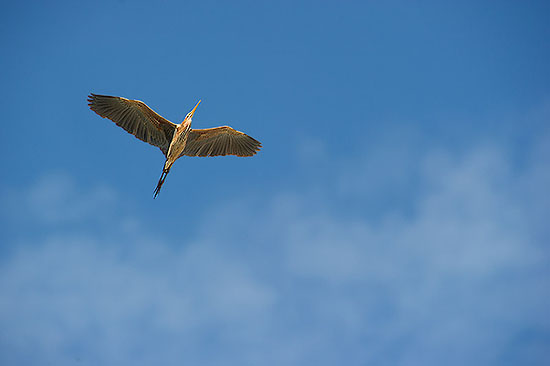
The next images show a Mediterranean Gull (38 of them counted), as well as Cormorants and two of the 26 Eurasian Spoonbills counted that day.
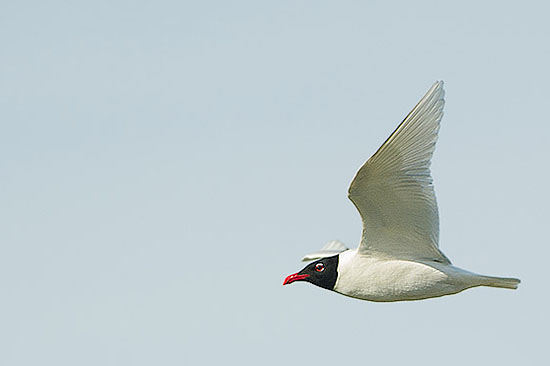

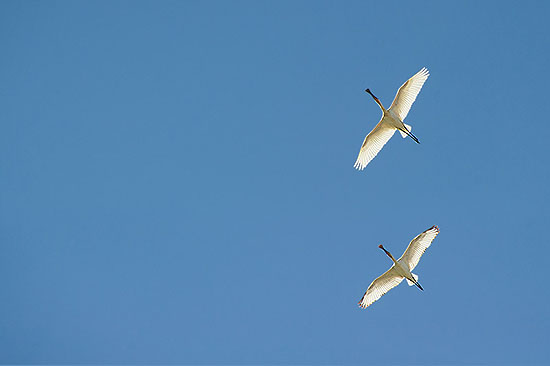
Again a very satisfying spring migration experience!
I’ll end with the image of a Short-eared Owl, which was observed on the tenth of May 2008, another great migration day. One Short-eared Owl was seen flying high over Northwards and two Short-eared Owls started to hunt in the late afternoon in a small wetland below the observation spot. The most spectacular aspect of that day was the observation of 8 Red-Footed Falcons, of which some of them were seen at very close range.
